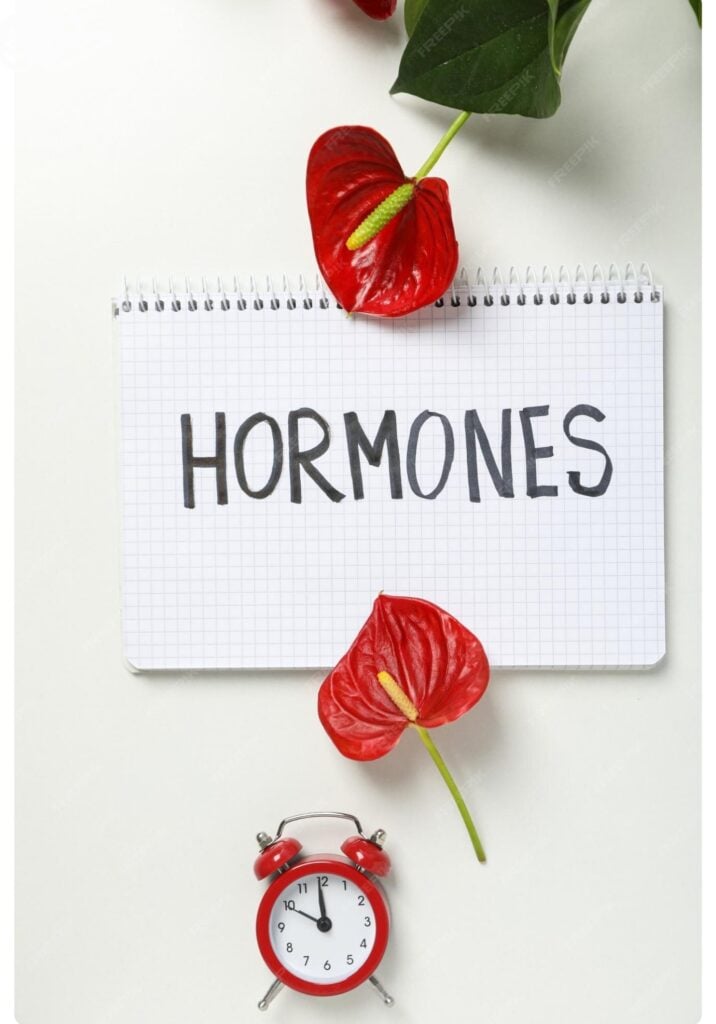Author: Dr. Yu Kang, LAc, RD
Date: October 2025
Menopause is a natural phase in a woman’s life, marked by declining estrogen levels. This decline affects nearly every organ system because estrogen receptors (ERs) are widely distributed throughout the body. The loss of estrogen signaling leads to symptoms such as hot flashes, mood swings, bone loss, skin changes, and digestive disturbances (Harlow et al., 2012).
Understanding how estrogen and its receptors work in various organs provides insights into both symptom development and strategies for relief.
Estrogen and Its Receptors
Estrogen acts through two main receptor subtypes: ERα and ERβ (Nilsson et al., 2001). These receptors are expressed in numerous tissues:
Brain (hypothalamus, hippocampus): regulates temperature, mood, and cognition.
Bones (osteoblasts and osteoclasts): maintain bone density and remodeling.
Heart and blood vessels: promotes vascular flexibility and cholesterol balance.
Skin and hair: stimulates collagen production and hair growth.
Reproductive organs (uterus, vagina, ovaries): control tissue integrity, lubrication, and elasticity.
Gut and digestive tract: supports digestive enzyme production, nutrient absorption, and microbiome balance (Mauvais-Jarvis, 2011).
Liver and immune system: regulates metabolism, inflammation, and detoxification.
Mechanism: Estrogen binds to nuclear ERs, which then enter the nucleus to activate or repress target genes. Membrane-bound ERs trigger rapid signaling pathways, affecting metabolism, blood flow, and cell survival (Nilsson et al., 2001).
Menopause Symptoms and Organ-Specific ER Effects
Brain
Declining ER signaling in the hypothalamus destabilizes thermoregulation, causing hot flashes and night sweats. Reduced ER activity in neurotransmitter pathways contributes to mood swings, anxiety, and insomnia (Freeman, 2010).
Bones
ERs in bone cells regulate osteoblast and osteoclast activity. Low estrogen leads to bone resorption exceeding formation, increasing osteoporosis risk (Riggs et al., 2002).
Heart and Vessels
ERα in vascular cells maintains vessel flexibility and healthy lipid profiles. Estrogen loss increases cardiovascular risk (Mauvais-Jarvis, 2011).
Skin and Hair
Reduced ER signaling decreases collagen synthesis and skin elasticity, contributing to wrinkles, thinning skin, and hair changes.
Reproductive Organs
ERs maintain vaginal tissue hydration and elasticity. Loss of estrogen causes vaginal dryness and dyspareunia.
Gut and Digestion
ERβ in the gut supports enzyme production, nutrient absorption, and microbiome balance. Estrogen deficiency can lead to malabsorption of calcium, vitamin D, and other nutrients, worsening bone loss (Mauvais-Jarvis, 2011).
Chinese Medicine Perspective
Traditional Chinese Medicine (TCM) interprets menopause as a decline of Kidney Yin and Essence (Jing), leading to excess Yang heat (Chen et al., 2014). Symptoms align with Western medicine findings:
Kidney Yin deficiency: hot flashes, night sweats, bone loss.
Spleen Qi deficiency: poor digestion, malabsorption.
Liver Yin deficiency: mood swings, insomnia.
TCM interventions aim to nourish Yin, regulate heat, and strengthen digestion, supporting systemic balance similarly to estrogen therapy.
Integrative Approaches for Symptom Management
Natural and Lifestyle Approaches (First Line):
Diet: Emphasize warming, nourishing foods; include phytoestrogens (soy, flaxseed), fiber, and fermented foods to support gut health.
Herbs: Rehmannia, goji berries, black sesame to nourish Kidney and Spleen Yin.
Movement: Tai chi, yoga, walking for circulation, bone loading, and stress reduction.
Acupuncture and meditation: Support hormonal and digestive balance.
Modern Medicine (Cautious, Individualized Use):
Hormone Replacement Therapy (HRT): Reintroduces estrogen to reactivate ERs and relieve symptoms.
Selective Estrogen Receptor Modulators (SERMs): Target ERs in bones while sparing reproductive organs.
Supplements: Calcium, vitamin D, and probiotics support bones and digestion.
Potential Risks of HRT: HRT is effective but not suitable for all. Risks may include blood clots, stroke, heart disease, and breast cancer, depending on personal and family history. Individualized assessment and careful monitoring are essential (Manson et al., 2017).
Conclusion
Menopause symptoms occur because estrogen receptors are present in almost every organ, and their activity declines with falling estrogen levels. Starting with natural remedies—such as diet, herbs, movement, and gut support—provides a safe foundation, while modern medical interventions, like HRT or SERMs, can be added cautiously and individualized to enhance relief. Combining these approaches provides the most effective strategy for managing symptoms, protecting bones, and supporting overall well-being.
References
Chen, X., Zhang, L., & Wang, Y. (2014). Traditional Chinese medicine approach to menopause. Journal of Integrative Medicine, 12(4), 281–288.
Freeman, E. W. (2010). Associations of depression with the transition to menopause. Menopause, 17(4), 823–827.
Harlow, S. D., Gass, M., Hall, J. E., Lobo, R., Maki, P., Rebar, R. W., … & Stevenson, J. C. (2012). Executive summary of the Stages of Reproductive Aging Workshop +10: Addressing the unfinished agenda of staging reproductive aging. Menopause, 19(4), 387–395.
Manson, J. E., Chlebowski, R. T., Stefanick, M. L., Aragaki, A. K., Rossouw, J. E., Prentice, R. L., … & Anderson, G. L. (2017). Menopausal hormone therapy and health outcomes during the intervention and extended poststopping phases of the Women’s Health Initiative randomized trials. JAMA, 318(10), 927–938.
Mauvais-Jarvis, F. (2011). Estrogen and androgen receptors: Regulators of fuel homeostasis and emerging targets for diabetes and obesity. Trends in Endocrinology & Metabolism, 22(1), 24–33.
Nilsson, S., Makela, S., Treuter, E., Tujague, M., Thomsen, J., Andersson, G., … & Gustafsson, J. A. (2001). Mechanisms of estrogen action. Physiological Reviews, 81(4), 1535–1565.
Riggs, B. L., Khosla, S., & Melton, L. J. (2002). Sex steroids and the construction and conservation of the adult skeleton. Endocrine Reviews, 23(3), 279–302.

